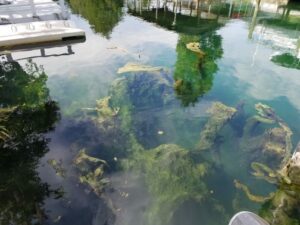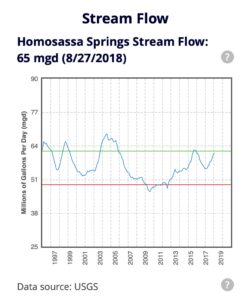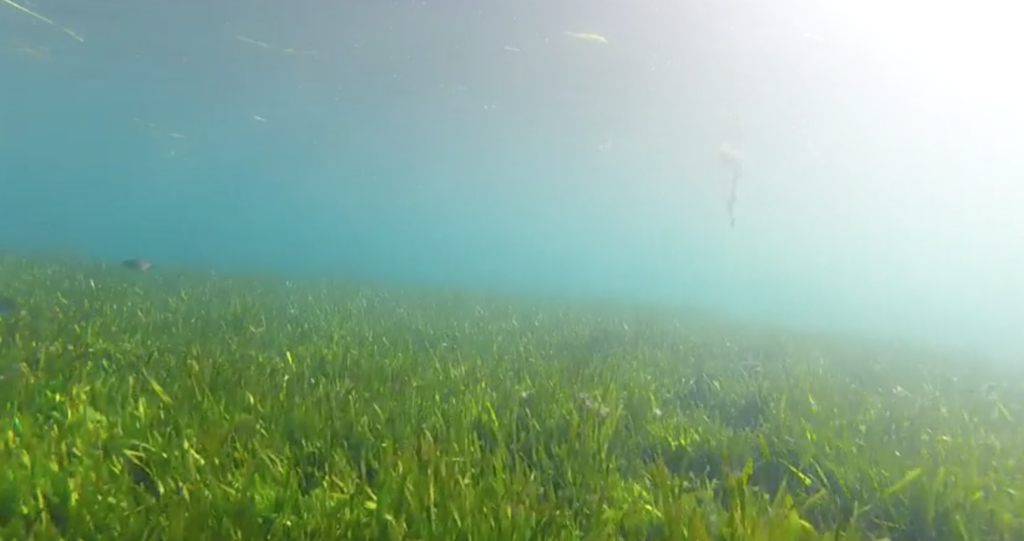A long, slow decline
The Homosassa River has been in a steady decline for decades. Our once beautiful river has turned black with pools of green slime. Algae dominates the ecosystem. Nitrate and salinity levels are at record highs. Lyngbya Algae (the green, stringy blobs that mushroom all summer) smothers other native plant life.

Water clarity, along with oxygen levels, are decreasing. The river grasses, once lush habitat for fish and other water wildlife, have all but disappeared. Layers of muck often measured in feet now cover the natural sand and limestone river bottom. All these combine to destroy one of the most beautiful and vibrant gems of the Florida’s springs system.
Clogged up springs
Organic matter or “detritus” compacts on the bottom of the river and its tributaries. This packed muck covers the ground and prevents new growth. This mass of detritus also covers up spring vents and boils. 
The Southwest Florida Water Management District maintains a dashboard on Homosassa Springs here.
Restoration Thinking
Restoration efforts begin at the river’s headwaters and work their way downstream. We remove the detritus that is blocking the springs and help increase the flow of the river. Water moves westward from central Florida toward the coast. If it can’t escape in the river’s headwaters it continues underground further toward the Gulf of Mexico. Clogged spring vents and boils have reduced springs output. Cleaning those vents and boils increases river flow. Learn about healthy springs here.
Species decline
As waters become more stagnant and have less oxygen, the variety of species that can survive in the river declines. Crabs and fish species leave, having too little to sustain them. As algae takes over, the clams and worms needed by crabs are choked out. Low oxygen dead zones result.

Pollution
For our waterway, fertilizer runoff and leaky septic systems are the worst polluters.
With fewer plants to absorb and remove these nutrients, the problem becomes progressively worse over time.
Pollution isn’t limited to nutrients. In addition to carelessly discarded plastic bottles, another “natural” pollution threatens the river. Scalloping is a popular summer activity, and the sea grass beds off the coast of Citrus County offer great fishing. But while those scallop shells will decompose in salt water, they will remain in fresh water for decades. People enjoying their scallop catch have taken to throwing the shells in fresh water, creating a long term problem that covers the floor of the river. Effectively creating a concrete bottom.
 We can make a difference in the way that our rivers support life. Make the river a priority. Keep fertilizer use within miles of the coast to a minimum. Support efforts to share important environmental information with the public. Share our posts on social media. Talk to your friends and neighbors. We can restore this river together.
We can make a difference in the way that our rivers support life. Make the river a priority. Keep fertilizer use within miles of the coast to a minimum. Support efforts to share important environmental information with the public. Share our posts on social media. Talk to your friends and neighbors. We can restore this river together.
